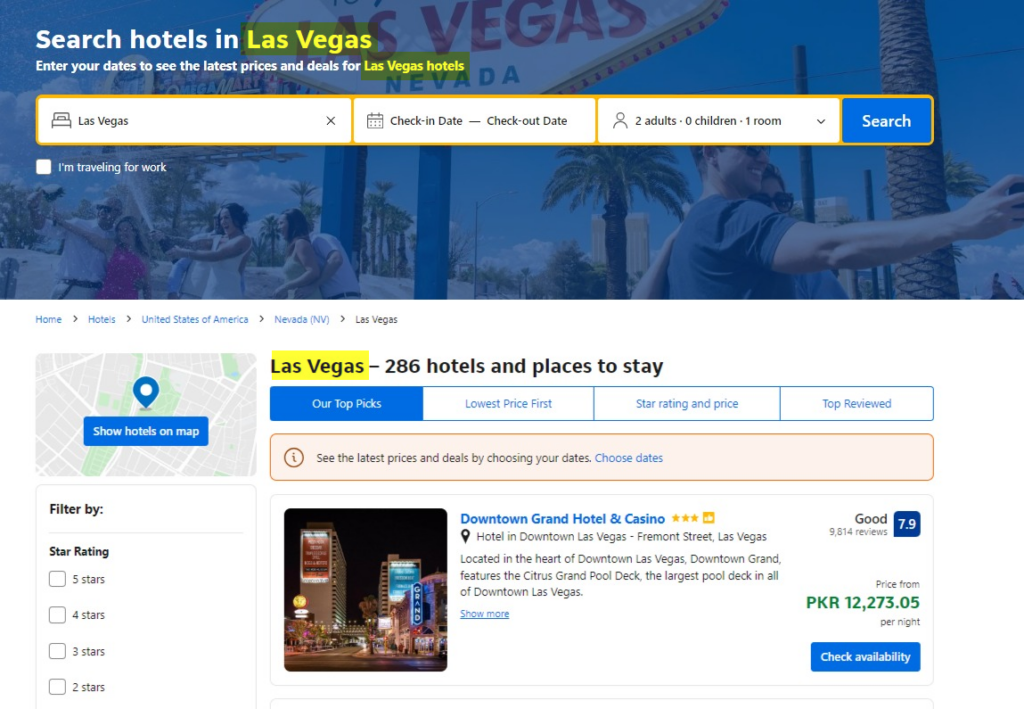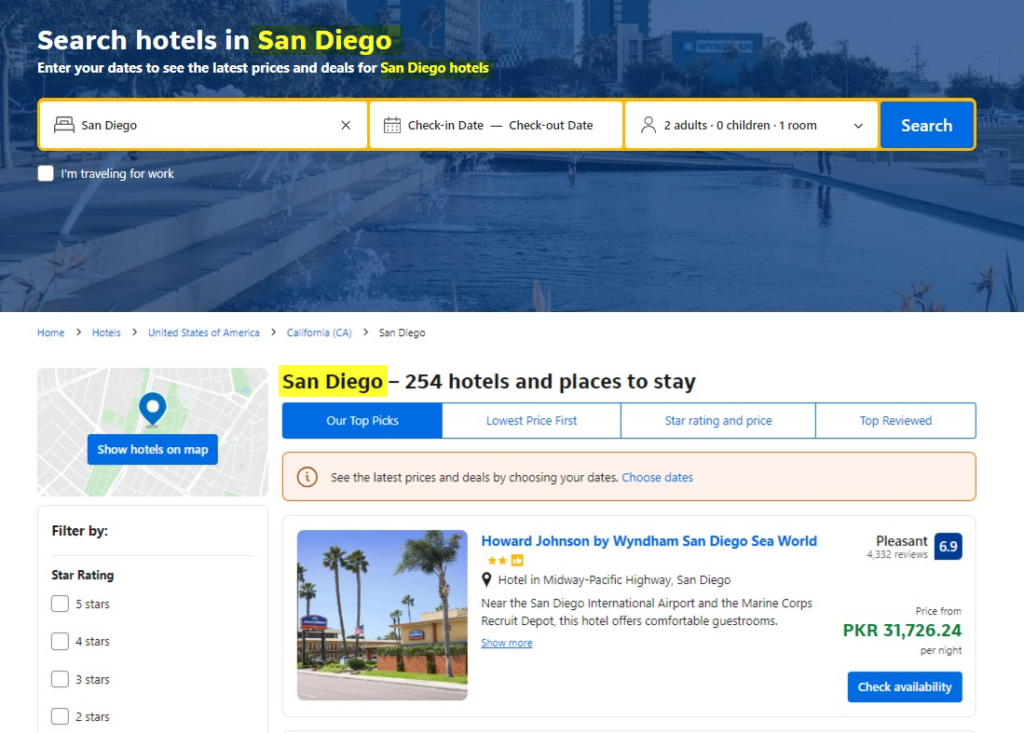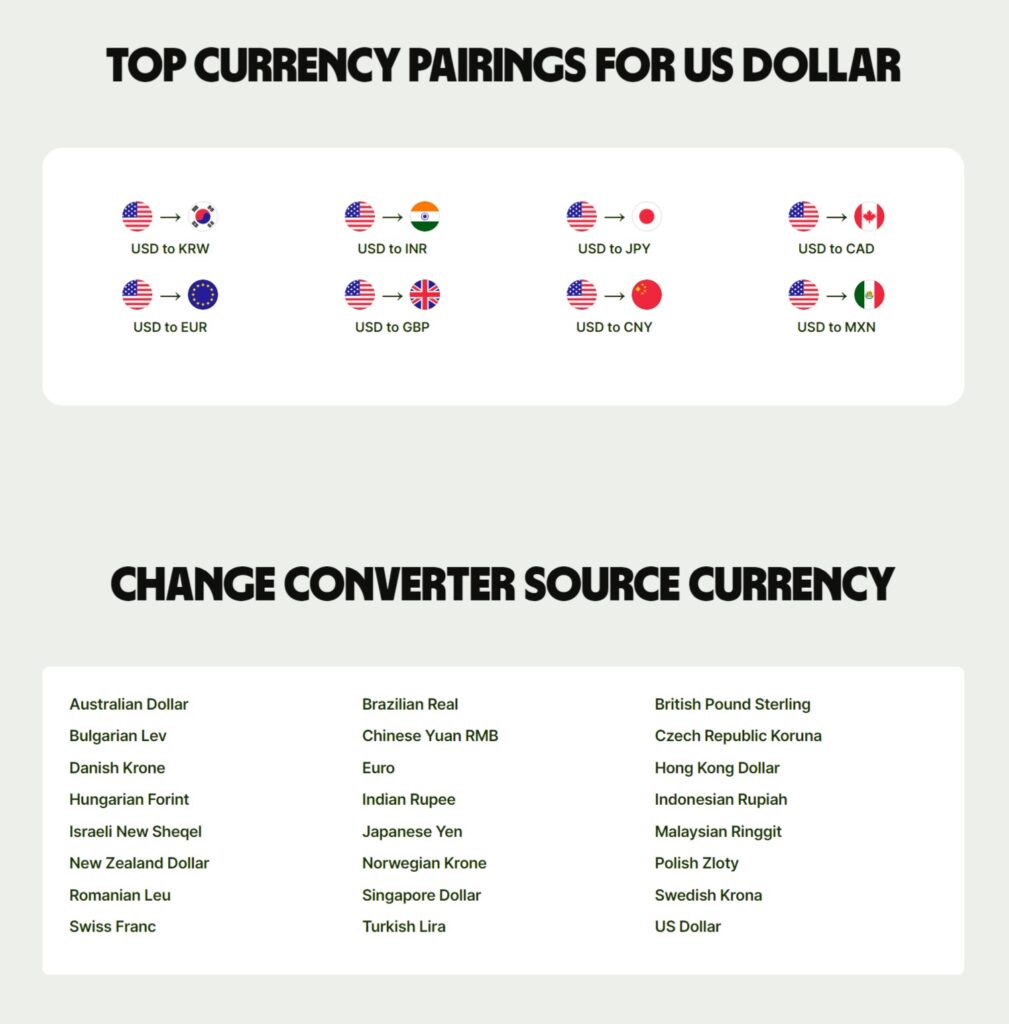Let me ask you something: Do you want to generate millions of organic visitors per month on complete autopilot without publishing tons of new content regularly?
If your answer is a loud YES, this article is for you.
Programmatic SEO is a proven technique that hundreds of businesses are using to generate millions of visitors from search engines through a single landing page and dynamic content.
Let’s dive into the world of programmatic SEO and see how you can use it in 4 simple steps and explode your organic traffic.
Yes, it is a legit, white-hat SEO strategy.
What is Programmatic SEO?
It refers to creating keyword-focused landing pages at scale. The technique involves using a template and dynamic text to create hundreds of landing pages on complete autopilot. The landing pages or webpages target highly specific niche keywords (usually with low competition) leading to a decent ranking in SERPs.
Programmatic SEO is an automated process to drive massive organic traffic by targeting thousands of similar keywords. This makes it different from regular SEO.
Programmatic SEO (also known as pSEO) is used by large businesses quite successfully. Wise is one of the brands that is using programmatic SEO to drive heaps of traffic to its currency converter pages that rank for thousands of similar keywords. They target keywords ‘currency1 to currency2’ and other similar keywords:

Wise has around 14,888 pages that drive more than 4,667K+ organic traffic per month.
If you look at the currency conversion pages, you’ll notice that they all are similar with slight differences.
Here’s the screenshot of the USD to AUD conversion page:

Here’s the screenshot of the USD to CAD conversion page:

The only difference is in the currency converter calculator and chart, everything else is the same. These pages use a landing page template with the same content that is changed dynamically based on the query.
Wise ranks on the first page for thousands of currency conversion keywords.
The same technique is used by several other companies including Zapier, Tripadvisor, Wego, Agoda, Webflow, Booking.com, and many others.
Programmatic SEO Pros and Cons
The major benefits of programmatic SEO include:
- It lets you drive heaps of organic traffic on autopilot
- Programmatic SEO is a scalable approach. You can target all the similar keywords in one broad category with a single landing page
- It is a cost-effective way to rank your target keywords
- It doesn’t require any maintenance or regular tweaks.
Programmatic SEO should be used with care as it has serious consequences and drawbacks when used incorrectly:
- It is a risky technique that might lead to poor or thin content across your pages
- You need programming skills to set up your landing page template and dynamic content
- Indexing all the web pages is a complicated task that requires a lot of time and effort.
Despite potential drawbacks, programmatic SEO is a popular strategy for targeting low competition keywords at scale.
How to Get Started with Programmatic SEO
You can setup your programmatic SEO strategy in 4 proven steps as discussed below:
Step #1: Find Keywords
You need to find keywords for programmatic SEO. You need to find a series of related keywords that can be targeted with a single web page with minor changes. It means the keywords should be similar and belong to a single broad keyword.
In the case of Wise, the keywords they target are ‘currency1 to currency2’ and they target hundreds of keywords that cover all the global currencies.
Expedia, Agoda, and Booking.com, on the other hand, target keywords that follow this pattern: best hotels in [city name].
You need low-competition keywords as they are easy to rank. This is essential because it’s very hard to build backlinks for all the landing pages individually, you rely on three things to rank for individual keywords:
- Your site’s domain authority. High authority makes it easy to rank for these keywords with little effort as you pass SEO value to these pages
- Internal links. You need to have a strong internal linking structure to improve your ranking
- Low competition keywords as they naturally have the potential to rank without any backlinks.
So, you should look for keywords that are:
- Relevant to your business
- Have transactional or commercial search intent as these are the most common types of intents that work best for programmatic SEO
- Medium or low keyword difficulty.
This requires the use of a keyword research tool such as Ahrefs, Semrush, Moz, and Google Keyword Planner. You need to find a list of keywords that are related to your business. Don’t look for long tail keywords at this stage, rather find a list of the most important keywords for your business.
For Wise, it is a currency conversion. For Expedia and Agoda, it is the best hotels.
You need to convert it into a series of keywords in the next step.
Step #2: Identify Head Terms and Modifiers
Once you have identified a list of transactional and commercial intent keywords, the next step is identifying head terms and modifiers (the basic building blocks of programmatic SEO).
A head term is the keyword category (not the keyword) that is broad and is significantly important for your business. It is a term that your target audience uses to find your products or business. Expedia’s head term is hotel which is a fairly large keyword category that has thousands of keywords.
Currency converter is the head term used by Wise.
A modifier is a term (word or phrase) that is added before or after a head term and it converts your head term into a long-tail keyword. It modifies your head term into a keyword you want to target and rank for.
Here’s an example of how head term and modifier work together:

The modifier for Expedia is the city name while the hotel is its head term. Wise uses conversion head term and the currency1 to currency2 are the modifiers.
You target head term + modifier with programmatic SEO so you need to identify both from the list of keywords.
Is it necessary to find both head terms and modifiers?
Absolutely.
Because programmatic SEO uses automation to create landing pages and change content dynamically in real time. You can’t achieve it without head term and modifiers.
Look at the keyword list from Step #1 and look for potential head term and modifiers. The first step is hunting your head term which is usually easier to find and you’ll find lots of them from the keyword list. It should be a single-word broad keyword category that has high importance for your business.
Once you have a list of potential head terms, look for modifiers. This is where it gets tricky.
Modifiers need to be in thousands, not hundreds, which means you ideally should look for city names, country names, keyword1 vs keyword2, and keyword1 or keyword2.
Location-based keywords make the best modifiers as they provide you with unlimited options. The idea is to generate thousands of keywords (using head term and modifiers) that cover an entire niche and each head term and modifier represents a long-tail keyword.
When finding head term and modifiers, consider the following important points:
- All the modifiers should have the exact same placement with reference to the head term
- Head term and modifier together form a long-tail keyword
- The search volume and difficulty level of all the long tail keywords shouldn’t have to be consistent. It is OK and acceptable to have the majority of the final keywords have zero search volume
- You must be able to generate thousands of long-tail keywords through your head term and modifier combination.
Step #3: Create a Landing Page Template
Once you have identified head term + modifiers, you are ready to set up your landing page template.
Your landing page should have a solid structure with great UX. The template should represent your head term and the content (including images) should change on the landing page with every keyword. Most of the content and elements on the landing page, however, remain the same for all keywords.
Here’s an example from Booking.com for two landing pages. The landing page for the search term ‘hotels in Las Vegas’ looks like this:

Here’s the landing page for the keyword ‘hotels in San Diego’:

You can see the heading and subheading change dynamically while the rest of the text remains the same. The structure of both landing pages is the same. That’s how a landing page template should look like.
Having exactly the same content on the landing pages for all the keywords will lead to thin content and might backfire (more on this later). You need to make sure that each landing page is unique in terms of content. Here are a few ways to make landing pages unique for programmatic SEO:
- Change the title for each keyword
- Have relevant heading and meta tags
- Use unique images for every landing page
- Tweak CTA and make it relevant to the keyword.
Essentially, the structure of the landing page should remain the same while content should change and must be relevant to the long-tail keyword.
Now the big question: How to create a landing page template for programmatic SEO?
Here’s how to create and execute a landing page template:
- You’ll need to create a landing page template using a free, paid, or customized template. You can use a landing page builder to create and download your template
- Add head term + modifiers and necessary data in an Excel sheet. This is your database that’s linked with the template
- Use a sync engine to sync data from the Excel sheet to your landing page template.
It requires technical and coding knowledge which means you should get help from relevant experts. You need to keep both your database and template on your server.
Once you have the landing page template and database synced, the content on the landing page will change automatically based on the search query that triggered it.
Step #4: Publish and Monitor
Finally, publish your landing page template and start monitoring the results.
You might not see traffic instantly and not all the pages and content will get crawled and indexed immediately. It’ll take time.
You need to monitor a few things as you start getting organic traffic:
- Use behavioral analytics tools like Heatmap to understand how visitors interact with your pages. This will provide you with accurate data on what to tweak
- Track conversions and see how you can improve it
- Monitor Google Search Console for crawl and index data.
You might have to tweak your landing page template multiple times before you start seeing a decent conversion rate. And it might take several months before Google and other search engines will crawl and index most of these landing pages.
Programmatic SEO Best Practices
If you are interested in getting started with pSEO for your business, check out the following best practices to stay ahead of your competition:
1. Improve Internal Linking
When you have hundreds and thousands of automated web pages targeting a broad keyword category, all of these landing pages are closely related to one another. This makes it super-easy to interlink them.
Interlinking significantly improves ranking as you’ll be passing heaps of link juice among pages.
Wise, for example, links to other currency conversion pages to boost internal linking:

These currency pairings and source currency changer are available across all its landing pages. These are highly relevant links that don’t just pass link juice but they improve UX.
You can interlink relevant landing pages automatically by creating a dedicated section on every landing page (like Wise). This creates a well-structured, meaningful, and automated internal linking structure that improves the ranking of individual web pages.
Internal links also improve crawling and indexing as it gets easier for web crawlers to find relevant pages. If these links aren’t static, it’ll significantly improve crawling as crawlers will find new links every time they visit one of these pages.
2. Acquire Backlinks
It’s impossible to get backlinks to all the automated pages that are part of your programmatic SEO campaign. What you should do is acquire backlinks for a few of them and then leave the rest on internal links.
When all these pages are interlinked, link juice from the backlinks will be distributed among all of them.

Not building backlinks at all to these pages and leaving everything on your site’s authority won’t help much. It is essential to promote some of the top pages religiously to let search engines know of their presence.
Wise has a domain rating of 85 which is quite good and it is much easier for authority websites to pass link juice to internal pages for ranking purposes. Similarly, other sites that are successfully using programmatic SEO are authority sites such as Zapier, Tripadvisor, Agoda, Booking.com, Webflow, Yelp, and others.
If your domain has a high domain rating and authority already, ranking these landing pages will get quite easier.
It, however, gets problematic when you have a low authority. In this case, it is absolutely necessary to build some backlinks to your landing pages so that search engines can find and rank them.
Ideally, if you have a high domain authority, you should still acquire some backlinks as you have created thousands of pages and most of them might never be crawled in the absence of backlinks.
How many backlinks to build?
There is no fixed number. The more you get, the better.
Selecting the right landing pages for link building is an important step. Follow these tips to get backlinks to the right pages:
- Find keywords that have low competition but decent search volume and build links
- Avoid building backlinks to pages that target keywords with zero search volume. Most of the keywords will fall in this category so you can skip most of the pages
- Choose landing pages that are already ranking on the first page
- Get backlinks to pages that are your main keywords in the group as it gets easier to pass link value to other relevant pages from a main landing page.
3. Have Helpful Content
Programmatic SEO is risky as it might lead to thin content, doorway pages, and violate other Google policies leading to lethal consequences. Google has most of its spam policies listed here. Violations that are closely related to programmatic SEO include:
- Doorways: Pages that lead visitors to other pages that aren’t too useful. If you direct visitors to another page from your programmatic landing page and offer little to no value on the landing page, Google will consider your landing pages to be doorways.
- Scaled content abuse: When you generate a lot of pages primarily to manipulate search engine rankings without any intention to help visitors.
It seems that programmatic SEO is a no-go zone as you create thousands of pages to drive organic traffic. The only exception is that you offer helpful and valuable content to the readers and don’t focus on search rankings.
This means: Each of your landing pages should address the query and the page should be helpful and valuable. And, you should avoid directing traffic to other pages unnecessarily.
Wise, Zapier, Tripadvisor, and other businesses that are using programmatic SEO have a few common things on their landing pages:
- You get what you want on the landing page without any ifs and buts
- The content is relevant to the search query
- You are not redirected for more information to any other page.
For example, when you visit a Booking.com page for hotels in Las Vegas, you get a list of hotels with everything you want to make the right choice. You don’t have to go to another website to find more hotels. Your query is addressed completely by Booking.com.
Similarly, Wise provides all the conversion details with historical data and lots of other helpful information on all its conversion landing pages.
Imagine if Wise had a sign-up form on its landing page that asks you to register to get currency conversion details, that’d have created a lot of issues for Wise. Because it’ll then be using its landing pages as doorways.
As long as you don’t violate Google’s policies and keep offering helpful, relevant, and unique content to the visitors, you are good to go.
Follow these guidelines to stay safe and avoid violating spam policies:
- Focus on helping visitors
- Make sure each page is significantly unique
- Improve landing page UX and make it great
- Offer all the details and provide all information on the web page
- Address and answer search query completely without diverting visitors to another page
- Regularly monitor bounce rate and average session duration. A decline means visitors aren’t getting enough value from your landing pages and leave too quickly. That’s an indication you aren’t delivering value. Find and fix the problem before Google notices it.
4. Go With the Right Search Intent
The simplest way to help readers and deliver value is by understanding search intent. You should find the primary reason why a user types a search query as this helps you answer it appropriately.
Understanding the search intent of the keywords and then crafting your content and landing pages accordingly is the easiest way to avoid thin content, doorway pages, and other policy violations.
There are 4 types of search intents:
- Navigational is related to finding a specific website on the internet
- Informational intent is focused on finding information
- Commercial searches are geared toward investigation of a specific product or service
- Transactional intent refers to queries related to buying a product or service that involves a transaction.

Identifying the right search intent is essential for the success of programmatic SEO. The best way to find the right intent for your head term and modifiers is via Google search. See what type of content Google is already ranking on the first page.
It’ll help you identify the intent.
For example, if ranking content is informational, you should stick with the same intent. You need to follow the same format, intent, and page structure. Because that’s what Google determines to be useful and helpful.
The landing page structure, layout, and content type and format should be inherited from the top-ranking content. Avoid experimenting with the intent and structure. It might backfire big time.
5. Choose Head Term and Modifiers Smartly
Programmatic SEO isn’t suitable for all types of niches. With suitable niches, you have to do the heavy lifting of finding the right broad category-level keyword and then suitable modifiers.
The basic component of programmatic SEO is covering an entire niche that has thousands of keywords (not a few hundred). And you should be able to target all these keywords with a single landing page.
These requirements make it challenging to do programmatic SEO for all types of businesses and niches.
The best-suited niches are the ones that involve location-based queries.
Zapier and Wise are exceptions that have done an amazing job in finding hidden keywords in their niches. That’s what you have to do.
Finding the right head term and modifiers is the biggest challenge.
You don’t have to find just any category keyword, it should have some value to your business. Nobody can tell you what head term and modifiers are right for your business. It comes down to your market research and how you come up with new ideas.
Conclusion
Programmatic SEO is highly profitable and scalable when done right. It is a risky technique and has multiple technical and SEO challenges. However, when you have the right head term and modifiers to capture an entire niche, you should not hesitate to invest in it.
As interest in AI is growing massively, it’ll soon get easier and more cost-effective to create landing page templates with dynamic content. Businesses that invest in programmatic SEO today before it becomes a new norm, will have a competitive advantage like Wise and Zapier.
Start crunching numbers and see how you can use it in your market.
Featured Image: Pexels



